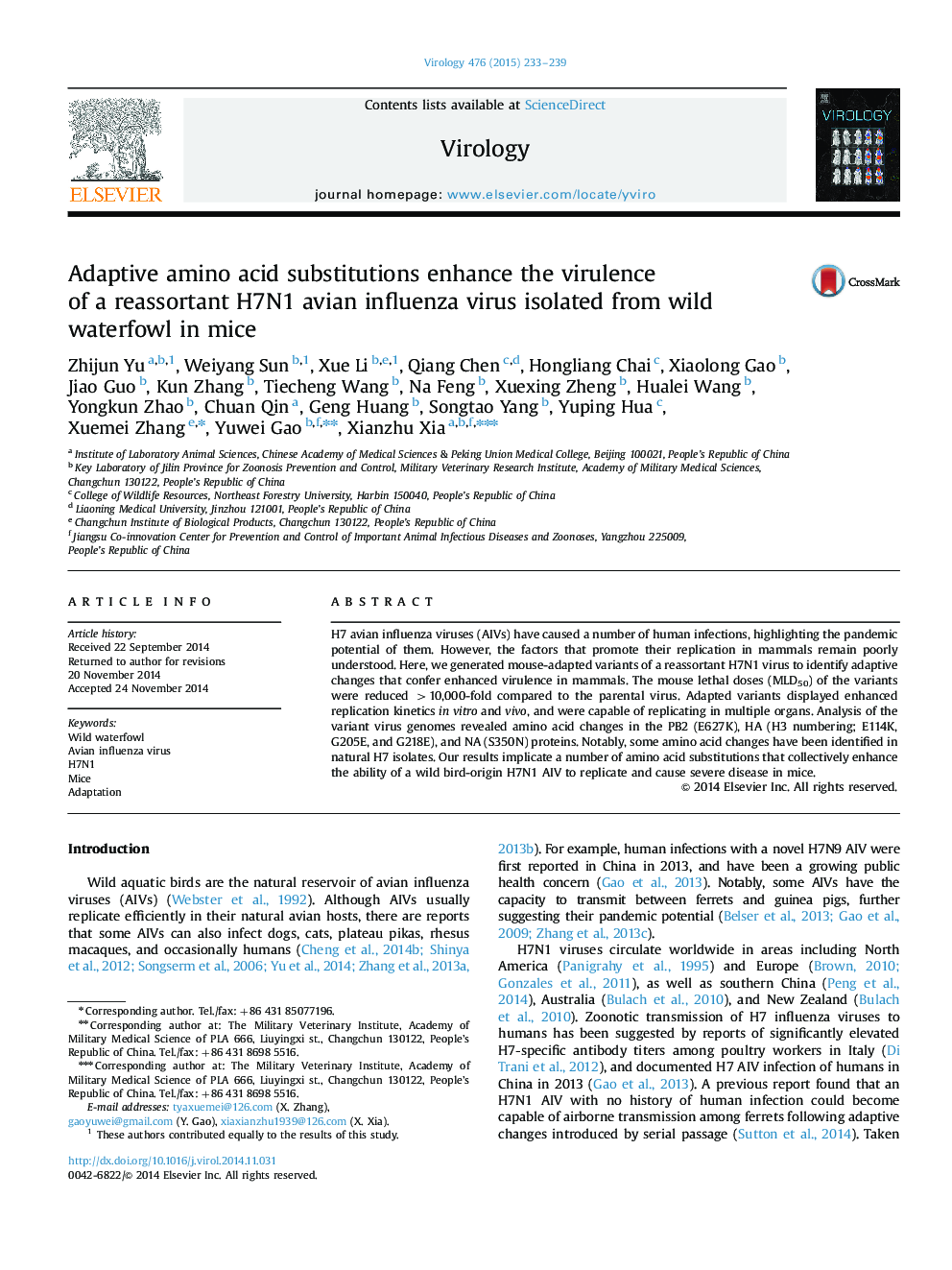| Article ID | Journal | Published Year | Pages | File Type |
|---|---|---|---|---|
| 6139668 | Virology | 2015 | 7 Pages |
Abstract
H7 avian influenza viruses (AIVs) have caused a number of human infections, highlighting the pandemic potential of them. However, the factors that promote their replication in mammals remain poorly understood. Here, we generated mouse-adapted variants of a reassortant H7N1 virus to identify adaptive changes that confer enhanced virulence in mammals. The mouse lethal doses (MLD50) of the variants were reduced >10,000-fold compared to the parental virus. Adapted variants displayed enhanced replication kinetics in vitro and vivo, and were capable of replicating in multiple organs. Analysis of the variant virus genomes revealed amino acid changes in the PB2 (E627K), HA (H3 numbering; E114K, G205E, and G218E), and NA (S350N) proteins. Notably, some amino acid changes have been identified in natural H7 isolates. Our results implicate a number of amino acid substitutions that collectively enhance the ability of a wild bird-origin H7N1 AIV to replicate and cause severe disease in mice.
Related Topics
Life Sciences
Immunology and Microbiology
Virology
Authors
Zhijun Yu, Weiyang Sun, Xue Li, Qiang Chen, Hongliang Chai, Xiaolong Gao, Jiao Guo, Kun Zhang, Tiecheng Wang, Na Feng, Xuexing Zheng, Hualei Wang, Yongkun Zhao, Chuan Qin, Geng Huang, Songtao Yang, Yuping Hua, Xuemei Zhang, Xianzhu Xia,
